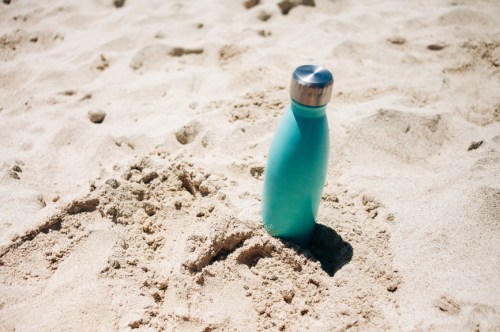Danone Wave is actively recalling specific flavors of International Delight coffee creamers across 31 states after receiving complaints of spoilage. Several people have reportedly gotten sick from the products.
More than 12,500 cases of the brand’s popular International Delight Cinnabon Classic Cinnamon Roll coffee creamer and International Delight Hazelnut coffee creamer are being yanked under the recall.
The impacted creamers were originally recalled in late February, but the recall was updated on Wednesday with a Class II designation from the Food and Drug Administration (FDA). That means the spoiled creamers can cause “temporary” or “reversible” health issues in people who use them.
The impacted products were sold in Alabama, Arkansas, Colorado, Connecticut, Florida, Georgia, Illinois, Indiana, Kentucky, Louisiana, Maine, Maryland, Michigan, Minnesota, Mississippi, Missouri, Nebraska, New Hampshire, New Jersey, New Mexico, New York, North Carolina, Ohio, Oklahoma, Pennsylvania, South Carolina, Tennessee, Texas, Virginia, Wisconsin, and Wyoming, according to the FDA.
The recalled bottles contain this information:
Cinnabon Classic Cinnamon Roll Creamer: 32-ounce, UPC 0 41271 01993 3, Best-By Date July 3, 2025, Plant Code 51-4114 R-S
Hazelnut Creamer: 32-ounce, UPC 0 41271 02565 2, Best-By Date July 3, 2025, Plant Code 51-4114 R-S
No other International Delight creamers are impacted by the recall at this time.
Why is this recall dangerous?
The FDA alert doesn’t offer a lot of specifics, but it does note that several people have gotten sick from each creamer due to “spoilage.” Having spoiled food isn’t a guarantee that you’ll get sick, but food that’s gone bad can harbor bacteria, parasites, or viruses, according to Darin Detwiler, author of the book Food Safety: Past, Present, and Predictions. That can lead to food poisoning.
How can coffee creamer get spoiled?
There are a few potential things that may have happened, per Detwiler. One is a breakdown in pasteurization or sterilization, which can allow harmful bacteria to survive. But the creamer can also become contaminated during manufacturing due to issues with sanitation or improper sealing, he says.
Improper temperatures during transportation, storage, or even on store shelves can allow bacteria and mold to grow, Detwiler says. Finally, packaging issues can be a problem. “Compromised packaging can create damage that can allow air and bacteria to leak in, leading to premature spoilage,” Detwiler says.
Signs of food poisoning
Again, you can have spoiled food, including spoiled creamer, and feel just fine afterward. But it can also cause you to develop food poisoning. According to the Centers for Disease Control and Prevention (CDC), the most common symptoms of food poisoning are:
- Diarrhea
- Stomach pain or cramps
- Nausea
- Vomiting
- Fever
However, food poisoning can also cause complications, including bloody diarrhea, diarrhea that lasts more than three days, a high fever, vomiting so much that you can’t keep liquids down, and dehydration, per the CDC.
Ultimately, “symptoms depend on the contaminant,” Detwiler says.
What to do if you have these creamers at home
If you have any of the impacted creamers at home, do not use them. For next steps about what to do with your creamer, contact International Delight’s customer service at 1-800-441-3321.
If you’ve already used the creamer and you don’t feel well, Detwiler recommends keeping an eye on your symptoms. “Mild discomfort may pass on its own, but persistent vomiting, dehydration, high fever, or severe diarrhea warrant medical attention,” he says.
If you’re uncomfortable but not overly sick, he suggests doing your best to stay hydrated. It’s also a good idea to contact your local health department or the FDA to report your illness, he says. “This helps authorities track foodborne outbreaks,” Detwiler explains.
Sign Up for Our Daily Newsletter
Get all the latest in wellness, trends, food, fitness, beauty, and more delivered right to your inbox.
Got it, you've been added to our email list.









